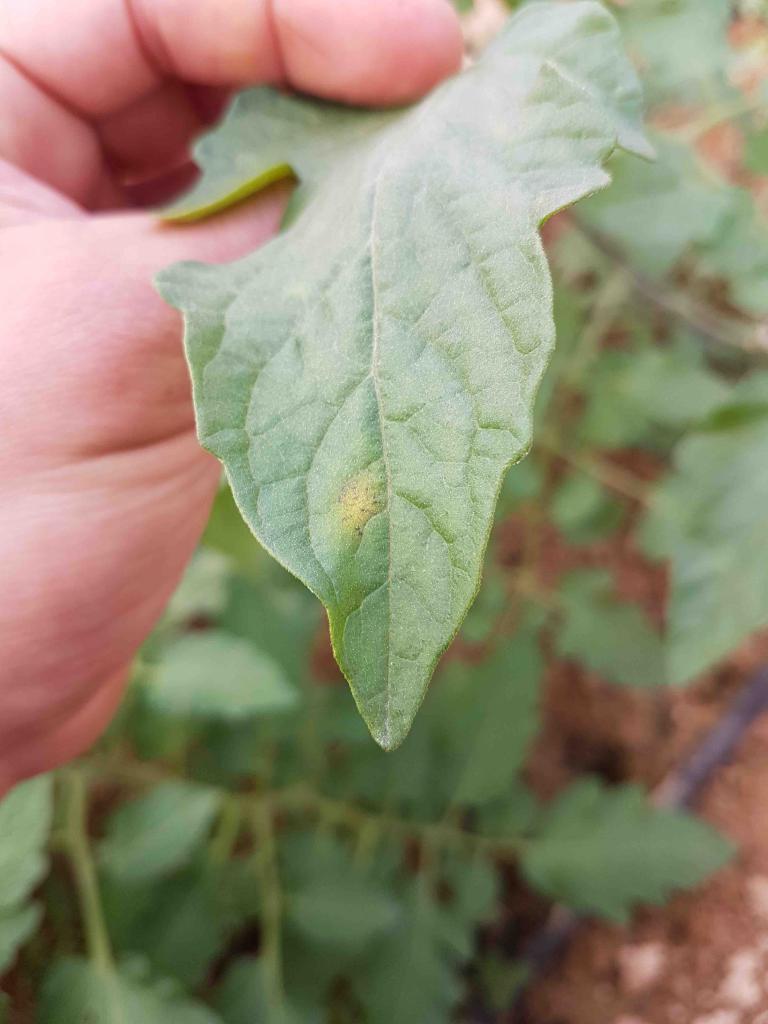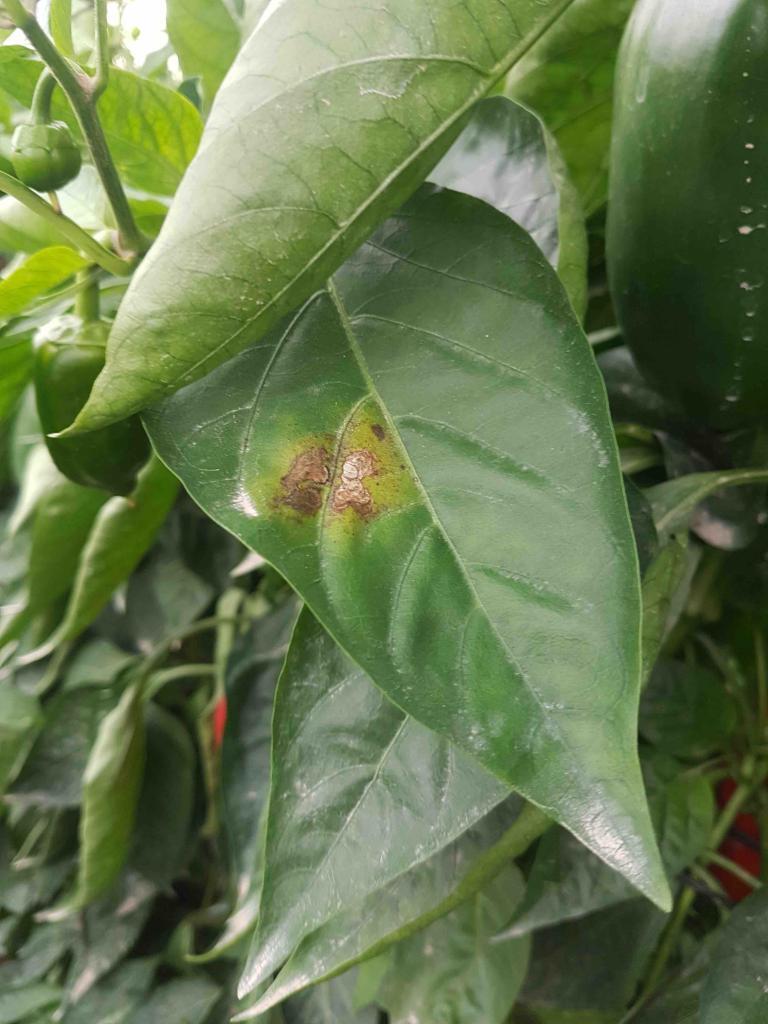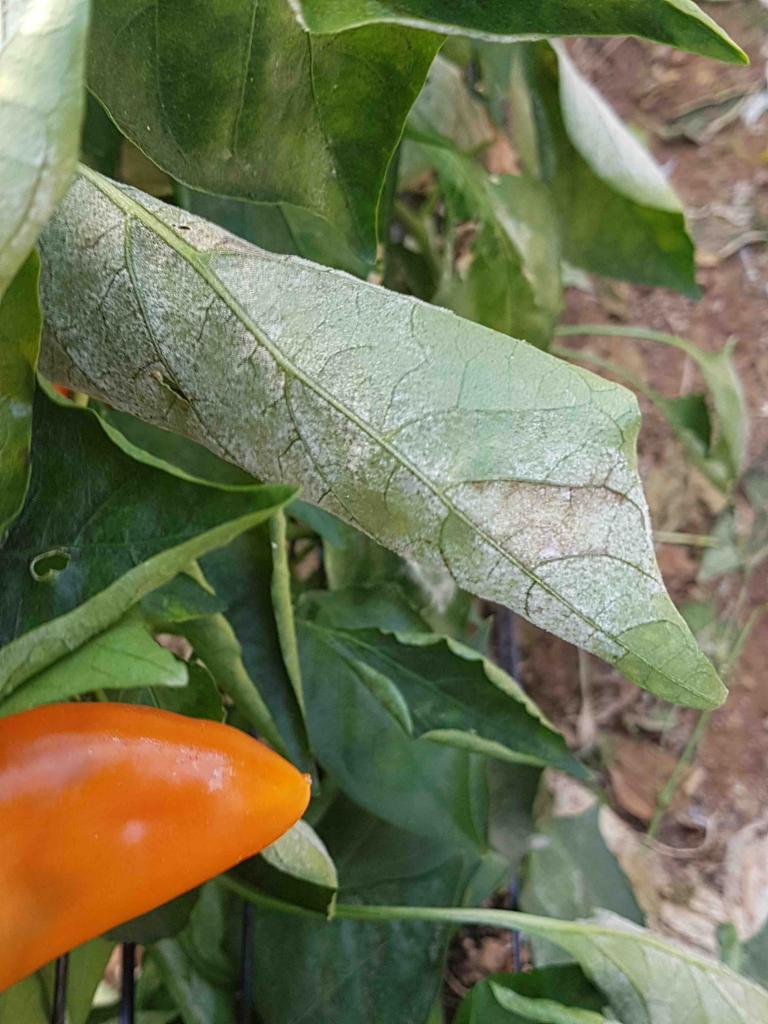Leveillula Taurica
Peppers, tomato, cotton, eggplant, onion, and garlic
Powdery mildew that is caused by Leveillula taurica is a multi-host fungal disease with worldwide dispersion. It usually appears on the surfaces of leaves as white or grayish spots with a powdery like texture, hence the name. If infestation reaches a critical point the leaves begin to drop.
Generally, the disease is host-specific, which means that it can only infect plants from the same genus or family.
Leveillula taurica is favored by warm climate, moderate to high humidity, low light conditions, and does not require the presence of free water.
Powdery mildew can cause considerable loss due to nutrient removal, reduced photosynthesis, increased respiration and transpiration, and impaired growth.
Compared to other powdery mildew pathogens, leveillula taurica is difficult to manage due to its tissue invasive characteristics.
The sooner the better: It’s easier and more cost effective to overcome infestation and control powdery mildew during the initial stage of infestation. Make it a routine to monitor the field regularly and search plants for the presence of powdery mildew on a weekly basis.
Sanitation: In most cases, since powdery mildew is generally host-specific, you do not need to worry about adjacent crops.
Nevertheless, simple sanitation measures are an important step and should be at the foundation of all plant protection programs.
There are differences in the dynamical nature and behavior of powdery mildew on different hosts. Growers and consultants tend to have their own treatment methods, different approaches, fungicides preferences, and secret tricks. Still, some consensus does exist: prevention, rotation, and the use of several fungicides each belonging to a different group of chemicals.
Effective control requires spraying with high pressure and high volume of water; good coverage is of the essence. Having a fixed or dynamic schedule for spraying application is a common strategy.
The following is a list of generic names for fungicides used in one or more parts of the world and is sorted into groups according to mode of action:
Group 1: Penconazole, triadimenol, tebuconazole, myclobutanil, tetraconazole, propiconazole, prochloraz, cyproconazole, difenoconazole, fenbuconazole, and triflumizole
Group 2: Azoxystrobin, pyraclostrobin, trifloxystrobin, and kresoxim-methyl
Group 3: Sulfur, copper sulfate, bicarbonates, mineral oils, neem oil, and detergents\soap-based products
Sulfur can cause injury to foliage and fruit when applied on days with a temperature above 32 C. Do not apply within 2 weeks of an oil application.
When powdery mildew is present, yet the symptoms have not appeared, consider spraying applications of fungicides once every 14 days. Do not use products with the same active ingredient in consecutive treatments except in group 3, as there are no restrictions there.
Use fungicides belonging to different groups to prevent powdery mildew from developing resistance to specific chemicals. It is important to remember that if powdery mildew develops resistance to fungicides within a group, the pathogens are likely to be resistant to all members of that group (except group 3).
Some commercial fungicides have two active ingredients and two modes of action. After using such products, take into account that now you have two groups that you already used. So, make sure to exclude those two active ingredients in the next application.
Sulfur (dust, wettable, flowable, or micronized) and potassium bicarbonate
Bacillus pumilis and bacillus subtilis
*Names marked in red are considered to be highly poisonous to beneficial insects.
*Names marked in green are considered to be organic and IPM (integrated pest management) compatible.
Image Gallery


